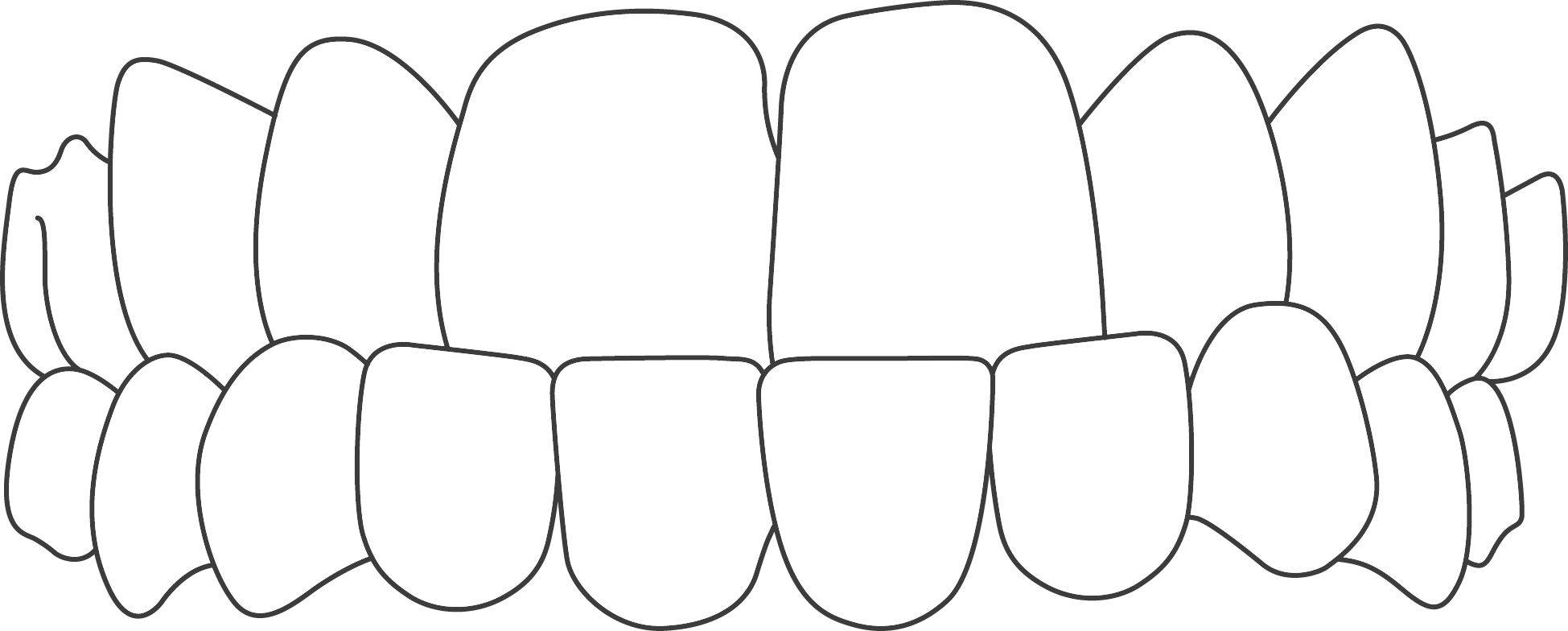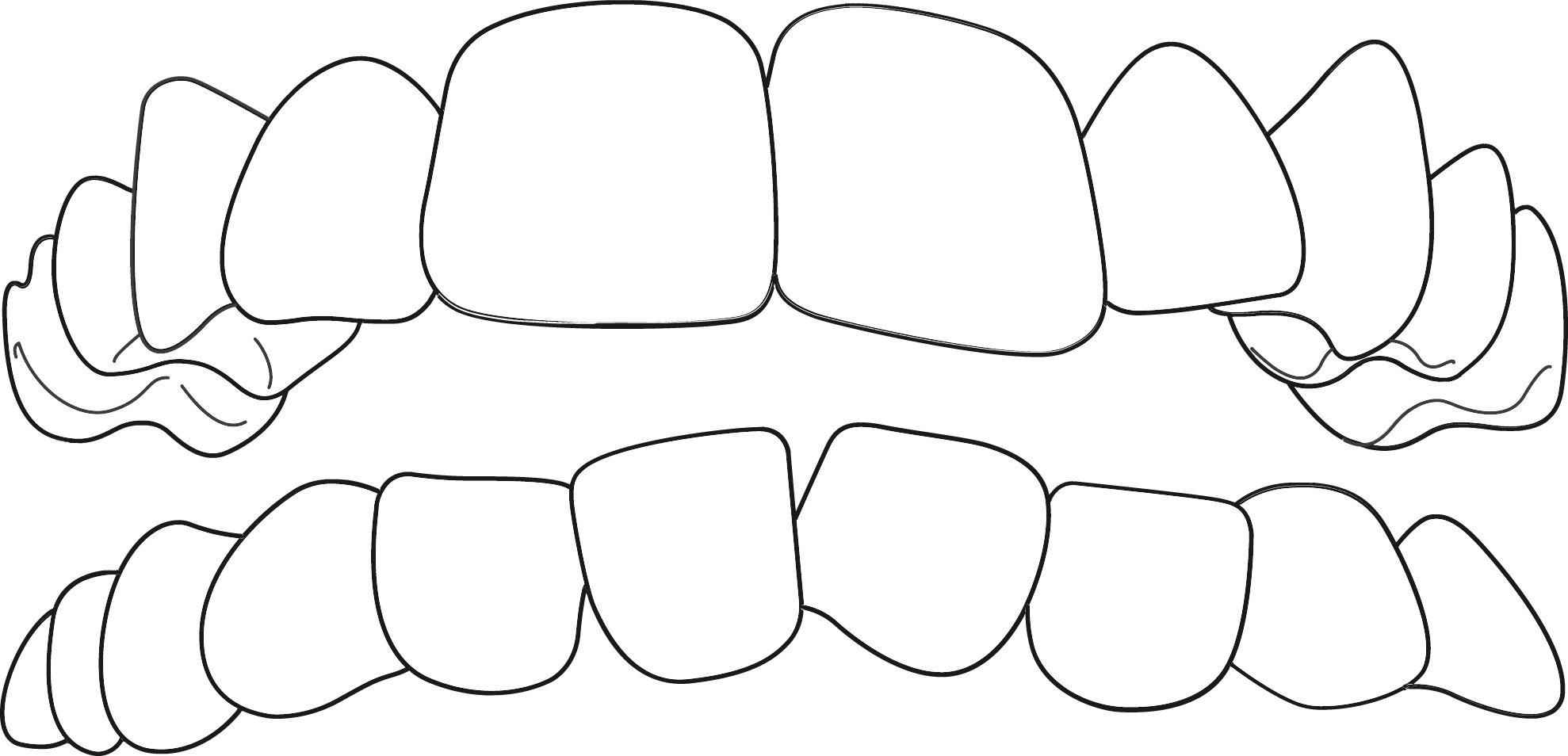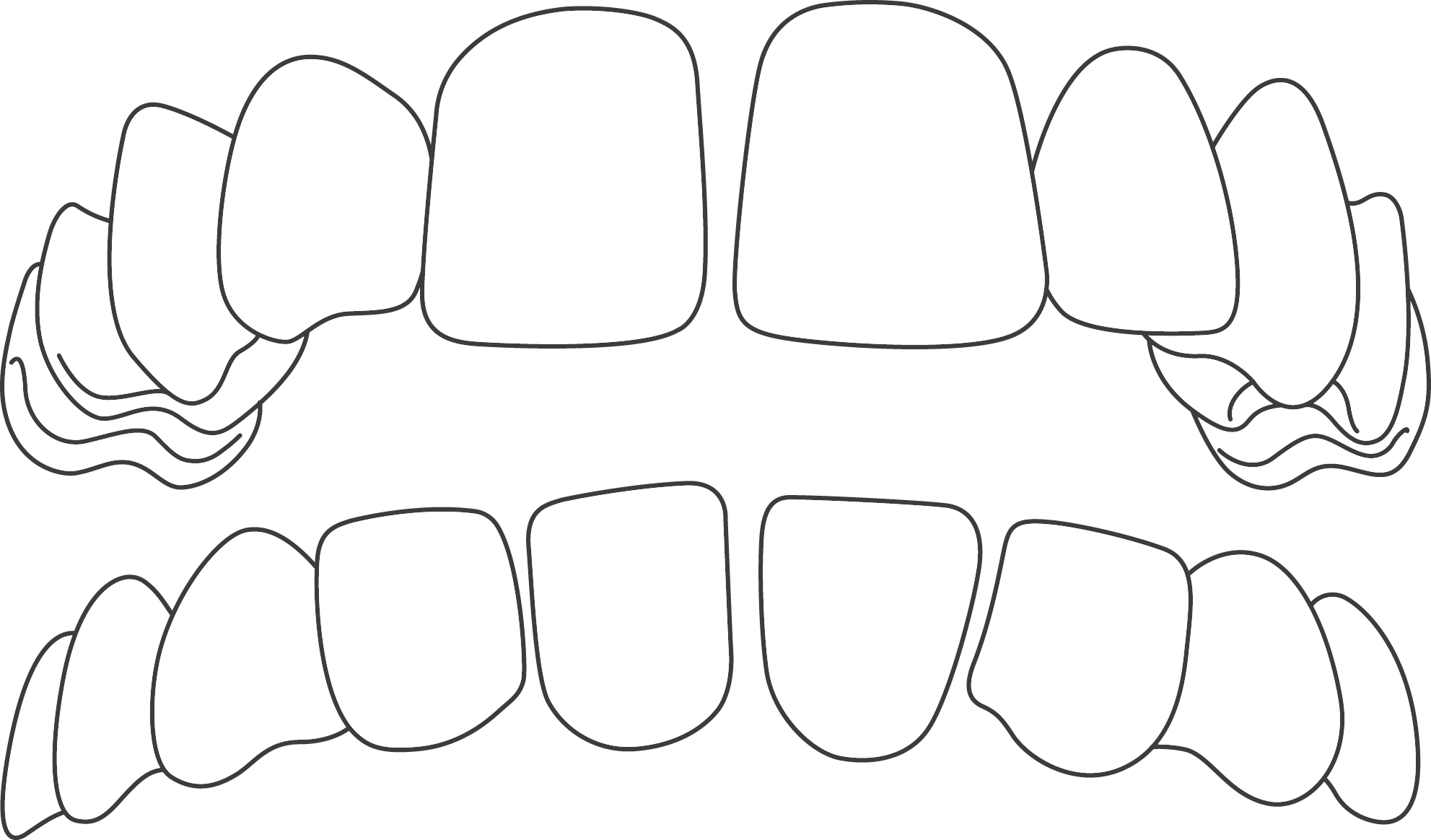Common Orthodontic Issues
Every patient is unique and every case is different!
There are common orthodontic problems that we see in new patients, but your specific experience, your preferences and your ultimate smile goals make your case one-of-a-kind.

Underbite (Malocclusion)
With an underbite, the lower jaw extends further than the upper jaw. This condition can cause facial imbalances, cause pain or difficulty chewing and speaking, and can cause the teeth to wear down prematurely as they don’t meet evenly.
Underbites are often treated with Invisalign® or a form of braces, and in more severe cases, surgical orthodontics.
Underbites are often treated with Invisalign® or a form of braces, and in more severe cases, surgical orthodontics.

Overbite (Malocclusion)
When the upper jaw extends further than the lower jaw, this characterizes an overbite condition. Depending on how severe the condition is, an overbite can make it challenging to eat and chew properly. In some cases, the lower teeth will meet the roof of the mouth—ouch!
Like underbites, overbites are often treated with Invisalign® or a form of braces, and in more severe cases, surgical orthodontics.
Like underbites, overbites are often treated with Invisalign® or a form of braces, and in more severe cases, surgical orthodontics.

Crossbite (Malocclusion)
When the upper teeth are positioned inside the lower teeth, this is called a crossbite. This may be a posterior crossbite (in the back of the mouth) or an anterior crossbite (toward the front of the mouth).
Crossbites can affect individual teeth or multiple teeth in a row. This condition is often the result of irregular tooth eruption, late loss of baby teeth, or thumbsucking during childhood. It can also occur due to a mismatch in the size of the upper and lower jaws.
Crossbites are often treated with braces, Invisalign, and/or various types of orthodontic appliances.
Crossbites are often treated with braces, Invisalign, and/or various types of orthodontic appliances.

Crowded Teeth
Teeth that are overlapping are considered ‘crowded’. More often than not, crowding is the result of insufficient room in the mouth. When the jaws aren’t wide enough to fit all teeth, the teeth start to overlap each other as they’re emerging.
In some cases, crowded teeth can be treated with a palatal expander appliance during childhood, while the jaws are still developing. In severe cases of crowding, your orthodontist will discuss the best treatment route with you!
In some cases, crowded teeth can be treated with a palatal expander appliance during childhood, while the jaws are still developing. In severe cases of crowding, your orthodontist will discuss the best treatment route with you!

Spacing Issues
Although it is normal to have some spaces between primary (baby) teeth, excessive gaps or spaces between the teeth can also be caused by a few factors, including excessive space in the mouth, missing teeth congenitally or due to cavities or trauma, as well as childhood habits (like thumbsucking).
Spacing issues are some of the most common orthodontic problems, and are often treatable with braces or Invisalign.
Spacing issues are some of the most common orthodontic problems, and are often treatable with braces or Invisalign.

Protrusion (Malocclusion)
A protrusion, also known as an overjet condition, occurs when the front teeth protrude outward. Commonly called “buck teeth”, an overjet generally results from underdeveloped jaw bones, or thumbsucking.
Early orthodontic treatment is an especially effective and efficient treatment option for protrusions. Depending on the severity of the condition, a full treatment of braces may be used for these cases.
Early orthodontic treatment is an especially effective and efficient treatment option for protrusions. Depending on the severity of the condition, a full treatment of braces may be used for these cases.

